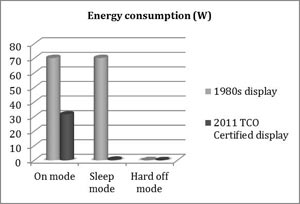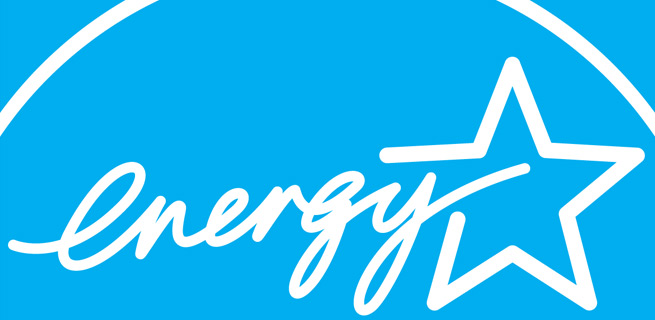TCO Certified has you covered!
On June 2, 2014 the new Energy Star 6.0 for computers for energy efficiency came into effect. Like TCO Certified, Energy Star updates requirements regularly in line with new technologies and user demands. This update will also be included in relevant TCO Certified criteria. So if you purchase a TCO Certified notebook, display, desktop or all-in-one PC you can be assured that it also is verified to meet the latest Energy Star requirements as well as all TCO Certified sustainability criteria. Buyers should make sure to request TCO Certified in purchasing specifications.
Overall, IT products make up about 2.5 percent of worldwide energy consumption and account for about half of all energy used in a typical office environment. Add to this the energy used in the manufacturing phase and IT is clearly a category where reducing energy efficiency is critical.
Changes to energy efficiency requirements in Energy Star 6.0
The new version of Energy Star will apply to computers manufactured after June 1, 2014. Some of the changes include:
- Product classification by graphics capacity
- Calculation of TEC value (Typical Energy Consumption, kW/year) has expanded to include the following modes: “off”, “sleep”, “long idle” and “short idle”.
- The mode weightings calculation for how long a product is in each mode has been updated.
- The calculation of the maximum TEC allowance has expanded to include considerations for internal / external power source, internal display, switchable graphics and energy efficient Ethernet port.
Full details on Energy Star 6.0 can be found on the dedicated Energy Star page.
Energy efficiency has come a long way – but there’s more to be done
Since the beginning of Energy Star and TCO certification in 1992, Energy Star compliance has been included in TCO Certified for eligible product categories; computers and displays.
Energy efficiency in IT products has come a long way. To quote a recent article in the MIT Technology Review “…if a modern-day MacBook Air operated at the energy efficiency of computers from 1991, its fully charged battery would last all of 2.5 seconds.”
Beginning with a working dialog in 1992, TCO Certified and Energy Star have pioneered more sustainable thinking in the area of electronics. This has helped create a harmonized and rigorous approach to energy efficiency. Achievements include the first energy saving sleep mode function in displays. Energy efficiency of displays has since increased by over 50% in active mode and consumption in sleep mode is now minimal.
A  2011 study from the University of Lund compares energy efficiency of a 1980s display with a 2011 model TCO Certified Display (see figure, left) TCO Certified has also been able to simultaneously help raise the quality of the display image through requirements for high picture quality.
2011 study from the University of Lund compares energy efficiency of a 1980s display with a 2011 model TCO Certified Display (see figure, left) TCO Certified has also been able to simultaneously help raise the quality of the display image through requirements for high picture quality.
Yet, there is still work to be done, as our use of devices increases, along with the growing energy consumption of large high performance products, especially products with a display. Learn more about some of the innovative work being carried our at MIT in the field of energy efficiency in computing
Energy Star in TCO Certified
To see how Energy Star is included in the TCO Certified requirements for Energy Efficiency, see criteria documents for Notebooks, Displays, Desktops or all-in-one PCs. Energy efficiency requirements are outlined in section A.6.3 – Environmental Requirements / Climate
TCO Certified is an international sustainability certification for IT products and includes the latest Energy Star compliance for relevant products. All TCO Certified products also meet strict criteria for social responsibility at the facilities where the product is manufactured, user safety and ergonomic design as well minimal environmental impact (product and production) during the whole life cycle.




